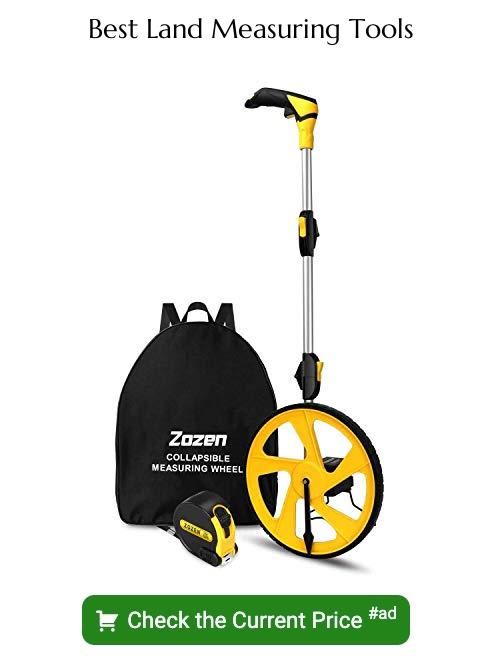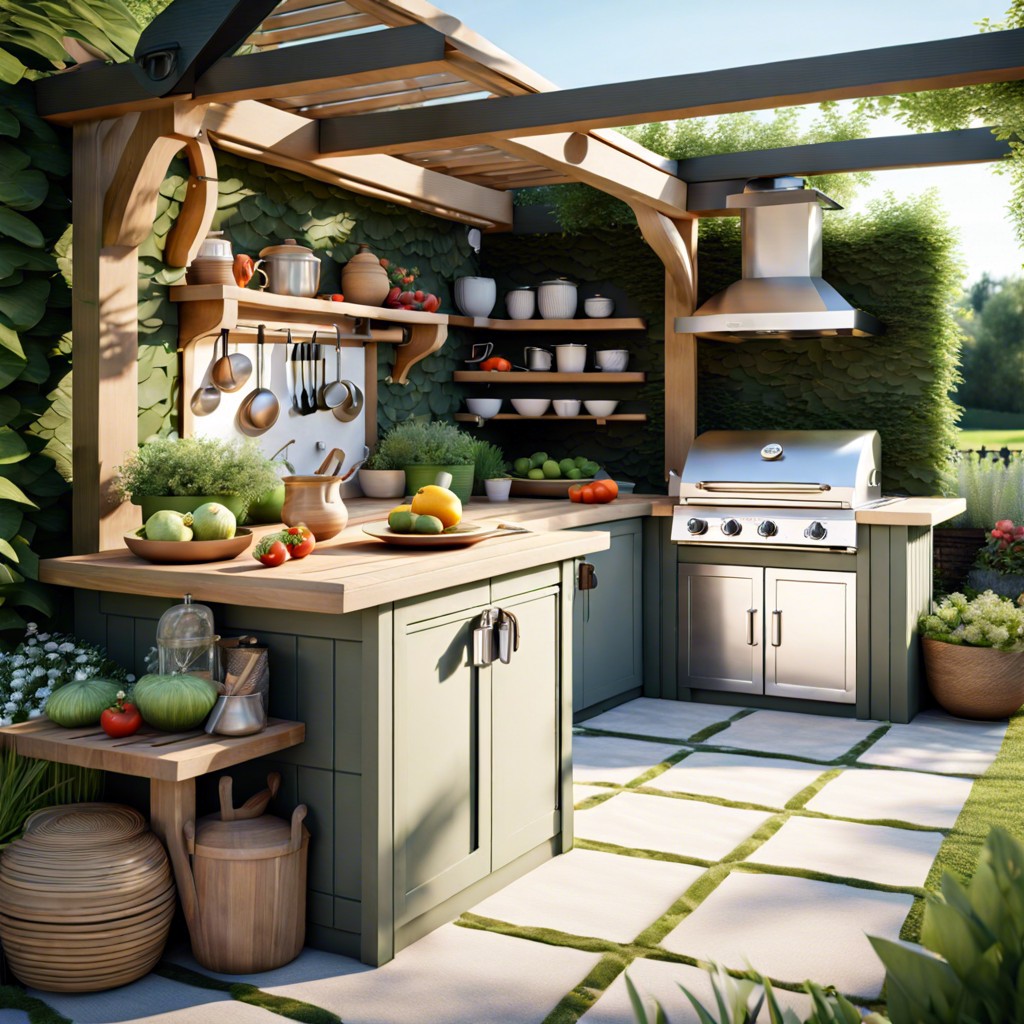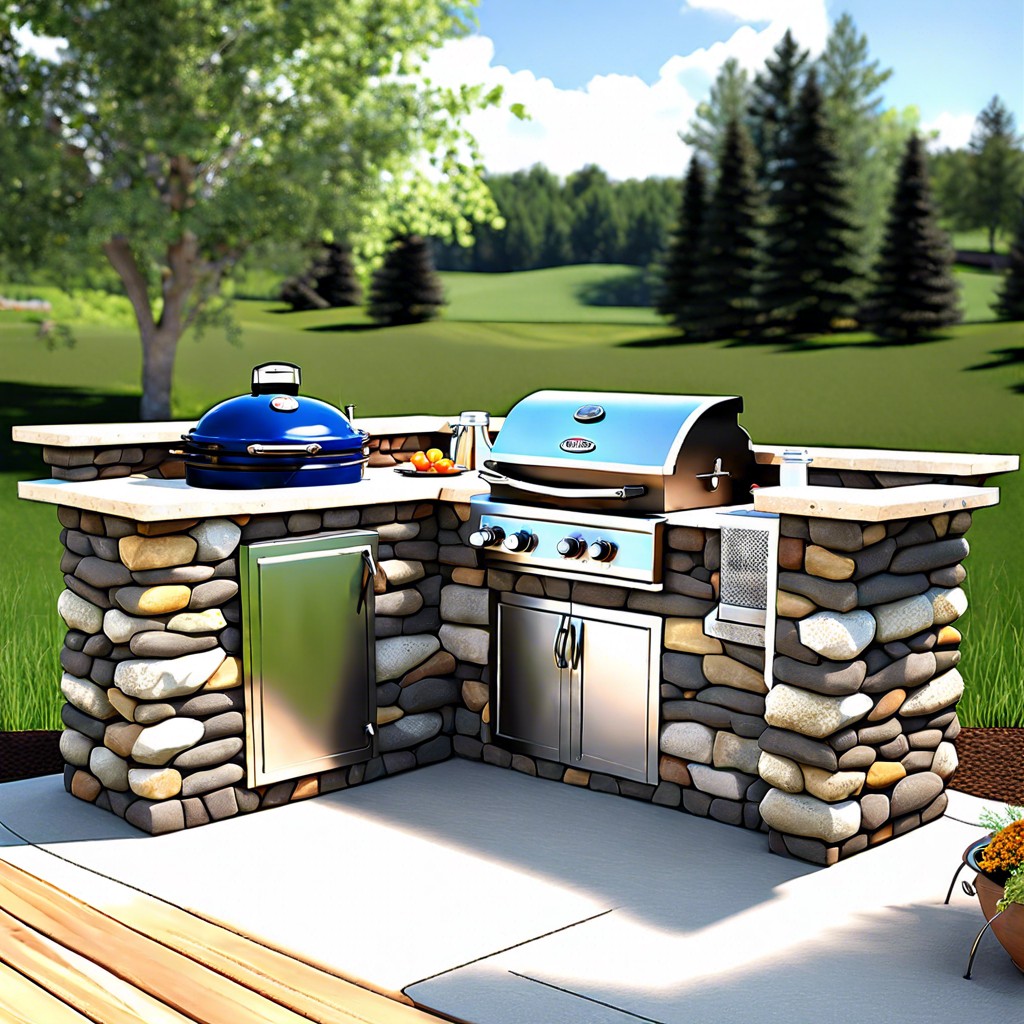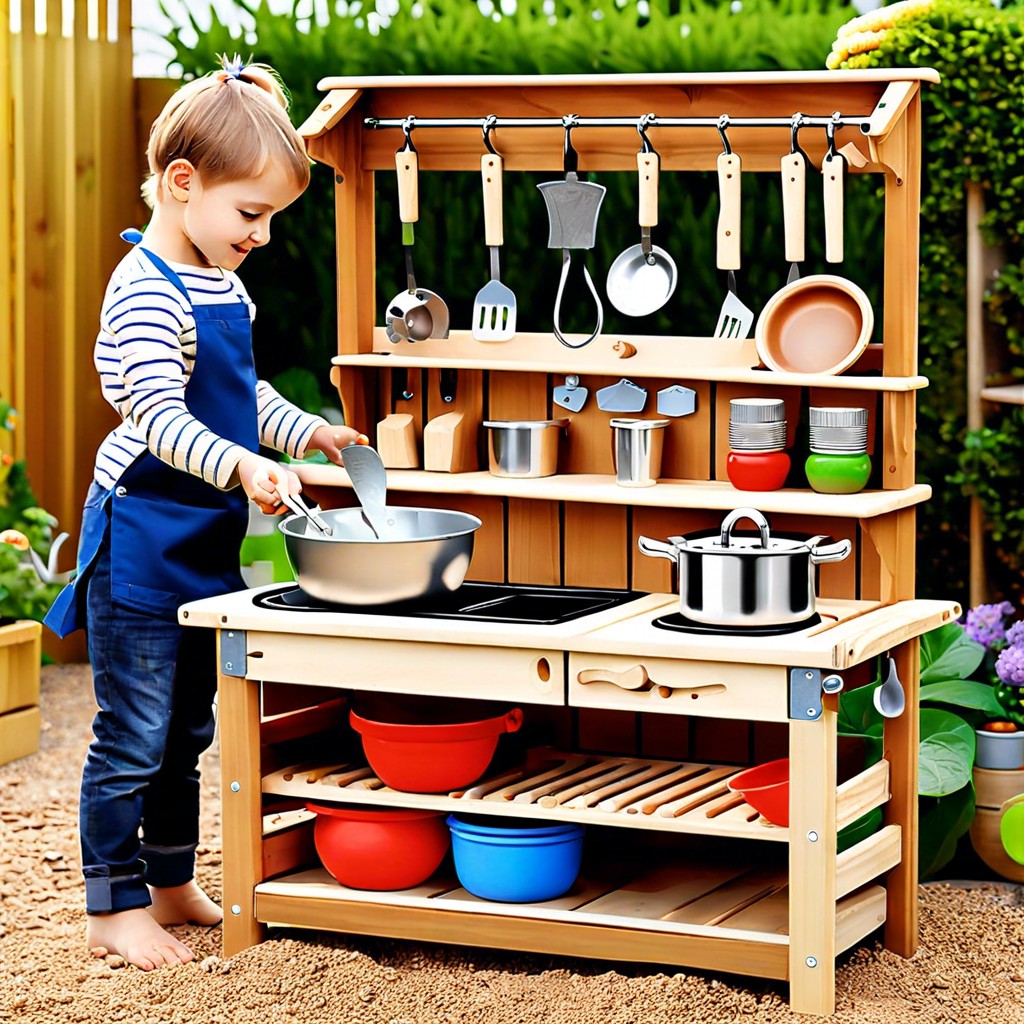Last updated on
Understanding the size of three acres is crucial because it can significantly shape future buying, selling, or development decisions.
Key takeaways:
- One acre is 43,560 square feet or 4,840 square yards.
- One acre is approximately 4,046.86 square meters.
- One hectare is equivalent to about 2.47 acres.
- Three acres is equivalent to 130,680 square feet or 14,520 square yards.
- Three acres can be used for homesteading, gardening, community parks, or commercial ventures.
What's Inside
Imperial System Vs Metric System When Measuring Land
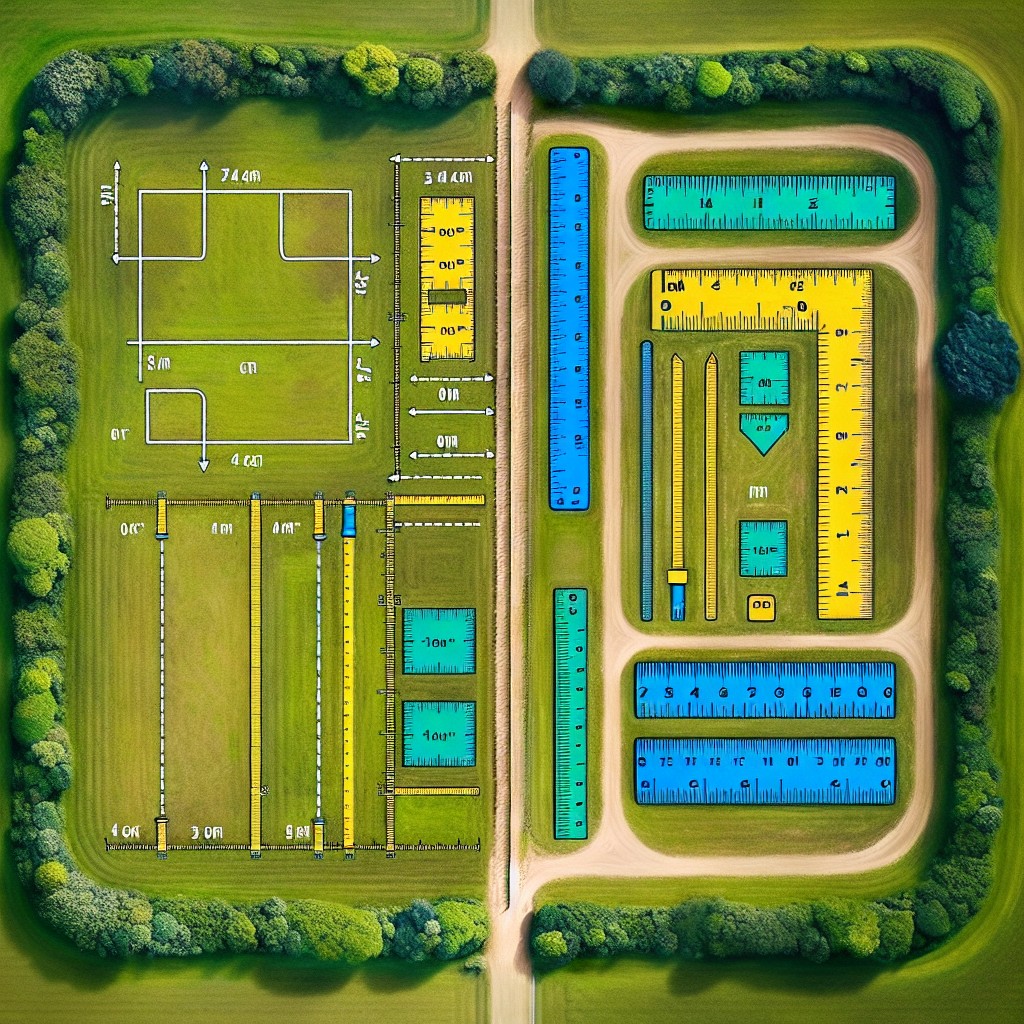
Navigating between the Imperial and metric systems in land measurement often requires a bit of conversion. Understanding both can be a real asset.
- In the Imperial system, used predominantly in the United States, land is commonly measured in acres, square feet, and square yards.
- The metric system, favored by many other countries, measures land in hectares and square meters.
To provide perspective, one acre equates to 43,560 square feet or 4,840 square yards in the Imperial system.
Meanwhile, in the metric system, one acre is approximately 4,046.86 square meters.
For those using the metric system, it is useful to know that one hectare is equivalent to about 2.47 acres.
Conversions between systems can be performed using online calculators or conversion tables for accuracy and ease.
This knowledge smooths out the process when dealing with international land transactions or comparing properties in different measurement standards.
Dimensions of 3 Acres in Sq Feet, Meters, And Yards

To visualize the size of 3 acres, it is essential to break it down into familiar units of measurement. One acre is equivalent to 43,560 square feet. Multiplying by three, this translates to 130,680 square feet for 3 acres.
In metric terms, since an acre is approximately 4,047 square meters, 3 acres would be about 12,141 square meters.
When expressed in yards, which may be more relatable for those familiar with football fields, an acre is roughly 4,840 square yards. Therefore, 3 acres come out to approximately 14,520 square yards.
This area is substantial; it’s nearly the size of three standard American football fields, minus the end zones.
Understanding these dimensions, it’s easier to grasp what can fit into a space of this size. Whether planning for agriculture, a housing development, or a personal estate, these figures help in visualizing the potential of 3 acres.
Potential Uses Of 3 Acres
Acquiring three acres of land opens up a variety of possibilities, catering to different needs and creative visions. Homesteading stands out as a popular choice, where self-sufficiency takes center stage with space for a family home, vegetable gardens, and even small livestock. Those with a penchant for gardening can cultivate an extensive ornamental landscape or perhaps start a small-scale organic farm, selling produce locally.
For the community-minded, this amount of land could accommodate recreational parks or community gardens, fostering social interaction and promoting wellness. Alternatively, enterprising individuals might see potential in developing a boutique outdoor venue, perfect for events such as weddings or retreats.
The size also lends itself well to conservation efforts; natural habitats can be established to protect local wildlife, offering a sanctuary for flora and fauna amidst development. With thoughtful planning, these three acres can effectively combine sustainable living, income-generating activities, and ecological stewardship.
Residential Land Use Examples
With three acres at your disposal, the residential possibilities are diverse. Here are a few examples of how this space can be utilized:
1. Single-Family Home with Amenities: Imagine a spacious dwelling complemented by a sprawling yard, a private playground for kids, and a generous garden or orchard. Even an in-ground pool, tennis court, or a small putting green could nestle comfortably in this expanse.
2. Multiple Homes or a Subdivision: This land size could potentially be subdivided, subject to local zoning laws, to create a mini-neighborhood. It might accommodate a few single-family homes with ample yard space or several townhouses with shared communal areas.
3. Sustainable Living: Those with a green thumb and a passion for sustainability could establish a hobby farm or a homestead. It’s ample room for a modest-size residential structure, a sizeable vegetable garden, a greenhouse, and even small livestock.
4. Rental Income Properties: Whether it’s building a guest house, small cottages, or creating a tiny home community, three acres can be a fertile ground for generating rental income while still maintaining privacy and space for each occupant.
With creativity and an eye for layout, three acres morphs from a mere measurement into a canvas for crafting your own residential masterpiece.
Commercial Land Use Examples
Spanning roughly 130,680 square feet, three acres can comfortably accommodate a variety of commercial ventures. Picture this space housing a small shopping center, complete with a diverse mix of boutique stores, a cozy coffee shop, and a mid-sized grocery store anchoring the complex.
Alternatively, those acres could transform into a spacious office park, offering a serene, campus-like environment. There’s ample room for several office buildings, surrounded by landscaped gardens and walking paths for employees to enjoy during breaks.
For the hospitality industry, this area provides the perfect footprint for a charming bed and breakfast or a boutique hotel, complete with a small conference center for business retreats or social events.
In agricultural terms, three acres serve well for a specialized micro-farm, focusing on organic produce or a vineyard startup, showcasing a selection of hand-crafted wines right from the source.
Lastly, with the rise of experiential activities, the space might be used for a recreational facility—think mini-golf, go-kart tracks, or an outdoor laser tag arena—each designed to create a unique entertainment destination.
Each of these possibilities highlights the versatility and potential profitability of developing three acres for commercial use, catering to the specific needs and interests of a community.
Value of 3 Acres Of Land
The worth of three acres can fluctuate significantly based on several influencing factors. Location tops the list, as land in urban areas or those near city centers often carries a premium price tag compared to rural settings. Zoning regulations also play a crucial role, as land designated for commercial use typically commands higher values than that zoned for agricultural or residential purposes.
Accessibility is another price determinant. Land with well-developed infrastructure—roads, utilities, and public services—tends to be more valuable. The land’s topography and usability also impact valuation; flat, clear land is generally more desirable and expensive than hilly or wooded areas that could require additional work for development.
Market demand shapes real estate value as well. High demand in a burgeoning market can drive up prices, while low demand in a stagnant market can cause them to dip. Understanding local trends and future development plans can provide insight into an area’s investment potential.
Lastly, the land’s current condition, including any improvements or structures already in place, can enhance its market value. Conversely, land that requires extensive clean-up or clearing might have a reduced price point reflecting the additional effort and resources needed to make it usable.
When evaluating three acres of land, these considerations can help paint a clearer picture of its potential value.
Find Land
Securing the perfect spot for your three-acre dream begins with a clear understanding of your needs and a bit of research. Consider the following points to guide your search:
- Location: Determine your desired area, taking into account factors like climate, geography, community, and proximity to amenities.
- Zoning Laws: Research local zoning regulations to ensure the land can be used for your intended purpose, be it residential, agricultural, or commercial.
- Access: Ensure there is legal access to the land, ideally with established roadways or the legal right to create access.
- Utilities: Investigate the availability of essential utilities like water, electricity, gas, and internet or the feasibility of installing them.
- Budget: Align found properties with your financial plan, considering not only the purchase price but also taxes, insurance, and future development costs.
- Future Development: Look into planned developments or environmental protections that could affect your use of the land in the future.
Conduct Survey
Hiring a professional land surveyor is crucial in understanding the precise boundaries of your 3 acres. Here are a few key points on why the survey is important and how it benefits you:
- Identifies Legal Boundaries: The survey clarifies the exact limits of your property, preventing potential disputes with neighbors.
- Ensures Zoning Compliance: Learn about zoning requirements to confirm that your intended use of the land is permissible.
- Reveals Easements & Right of Way: Uncover any existing easements that may affect your development plans or access to the land.
- Aids in Construction Planning: Provides topographical data to guide the placement of buildings, driveways, septic systems, and other structures.
- Facilitates Accurate Land Value Assessment: Knowing the exact dimensions and features of your land helps in appraising its value accurately.
Remember, the results of a land survey are an official record that can serve as a legal document in any land-related matters.
Prepare Land
Before you start building on your 3-acre plot, there are crucial steps you should follow to ensure the land is well-prepared. Clearing any vegetation is essential to create a blank canvas, which may involve removing trees, shrubs, and underbrush.
Engaging with local authorities is also key to identify any underground utilities that need to be marked or rerouted. Additionally, consider the topography of your land; grading or leveling might be necessary to prevent future drainage issues.
Soil testing is an advisable next step to understand the type of foundation your structure will require, while also informing your decisions regarding landscaping and gardening. By thoroughly preparing your land, you’re setting the stage for a successful and smooth construction process.
Lay a Foundation
Once your land is prepped, laying a foundation is the next crucial step in turning your spacious 3 acres into a practical living or working space. Like a reliable friend that holds you steady, a well-built foundation ensures the stability and longevity of any structure above it, be it a quaint cottage or an expansive warehouse.
Choosing the right type for your project is essential:
- Slab-on-grade Foundation: This is a single layer of concrete, several inches thick, poured directly on the ground. It’s ideal for warmer climates where ground freeze isn’t a concern.
- Crawl Space Foundation: Elevated a few feet off the ground, this provides an under-home space for wiring and plumbing access.
- Basement Foundation: While a more expensive and labor-intensive option, it offers additional living or storage space.
Remember, each type requires specific preparations:
- Site Clearing and Levelling: Ensuring the ground is clear and level for uniform support.
- Footings: Structures typically need deep footings to distribute the weight over a larger area, especially important in cold climates to extend below the frost line.
- Drainage: Including a system to prevent water accumulation that can affect the foundation’s integrity.
Expert legal guidance ensures the foundation adheres to zoning laws and building codes, which vary based on regions and intended use of the building. Identifying and preparing for the potential challenges of your unique plot will pave the way (literally) for a robust and stable foundation.
Utility Connections
Establishing utility connections is a critical step when developing your three-acre plot. Consider the following points to ensure a smooth process:
1. Location Matters: Proximity to existing infrastructure influences both cost and complexity. Closer connections generally equate to lower expenses.
2. Start Early: Engage local utility companies as early as possible. The process can be lengthy, sometimes taking months, so factor this into your timeline.
3. Assess Needs: Determine what utilities are essential—electricity, water, sewer, gas, and telecommunications. Prioritize them based on your development goals.
4. Permits and Regulations: Secure all necessary permits. Local regulations vary, so research is key. Compliance prevents legal issues and ensures safety.
5. Cost Estimates: Request detailed quotes from service providers. Be prepared for the expense, as extending utilities across three acres can be significant.
6. Sustainable Options: Explore renewable energy or septic systems, which can be more cost-effective and eco-friendly in the long run.
Create a House
Redefining your three acres starts with building a home that suits your vision. Selecting a design that complements your lifestyle and the terrain is pivotal. Work closely with an architect or choose from pre-designed plans to maximize space and efficiency.
Factor in sustainable building practices—such as the orientation of the house for natural light or the integration of renewable energy sources—to both minimize environmental impact and potentially reduce long-term costs.
Consider future developments as well: will you expand the house, or perhaps add a guest cottage or workshop? Planning for these possibilities now ensures you won’t encounter limitations later.
Lastly, familiarize yourself with zoning laws and building codes to prevent any compliance snag during construction. Successful house creation on your land aligns meticulous planning with a reflection of your personal style and needs.
Prefab Homes
Prefab homes provide a swift and eco-friendly option for building on 3-acre parcels. These structures are manufactured off-site in a controlled environment, minimizing waste and construction time upon delivery to the property. When selecting a prefab home, consider several aspects:
1. Design Flexibility: Many manufacturers offer a variety of floor plans and customization options to meet diverse needs and preferences.
2. Budgeting: Prefab houses often come with a fixed price tag, helping to avoid unexpected costs. Ensure you take into account additional expenses such as site preparation and utility hookups.
3. Construction Time: Significantly faster than traditional building methods, some prefab homes can be assembled within a matter of weeks after the groundwork is laid.
4. Sustainability: With a focus on energy efficiency, many prefab designs incorporate sustainable materials and features like solar panels or rainwater harvesting systems.
5. Permitting Process: It’s typically streamlined since prefab homes must adhere to strict building codes. However, always verify local zoning regulations and obtain necessary permits before installation.
By considering these factors, prefab homes can be a practical and modern solution for developing 3 acres of land.
Shipping Container
Implementing shipping containers on your three-acre plot embraces a unique blend of functionality and modern design. These steel structures, originally purposed for transporting goods, are now increasingly popular as sustainable and cost-effective building blocks for homes and commercial spaces.
Key points to consider:
- Permitting Process: Check with local zoning regulations for guidelines on using shipping containers as structures, as some areas may have restrictions.
- Durability: Crafted to endure harsh maritime conditions, these containers are robust and can withstand extreme weather, making them suitable for various climates.
- Modular Nature: Their standardized sizes allow for stacking and positioning in numerous configurations, offering creative design freedom.
- Insulation and Conditioning: While these units are sturdy, they require proper insulation and ventilation modifications to be habitable.
- Eco-Friendly: Reusing containers is a form of recycling, which reduces waste and the demand for new construction materials.
- Customization: Although compact, containers can be transformed with windows, doors, and all the interior finishes of a traditional home.
- Speed of Construction: Often faster to convert than building from scratch, they provide a quicker path to a move-in ready space.
Considering these factors, shipping containers offer a viable construction alternative that can be tailored to fit the unique landscape and usage of your acreage.
Cabin
Opting for a cabin on your 3-acre property melds rustic charm with the functionality of modern living. The footprint of a cabin varies, but many comfortably fit within the expansive space provided by 3 acres. Eco-friendly and often made of natural materials, cabins can be designed to minimize impact on the land while maximizing comfort and aesthetic appeal.
Cabins can range from simple, one-room structures to elaborate multi-bedroom retreats. This versatility makes them ideal for a variety of purposes: think cozy homesteads, guesthouses, or even lucrative vacation rentals. With proper planning, a cabin can offer a self-sufficient lifestyle through the integration of renewable energy sources like solar panels and rainwater harvesting systems.
For those seeking to connect with nature, a cabin can serve as a perfect base for outdoor activities. Consider the ample land for gardening, raising animals, or leisure areas. Emphasis on blending indoor and outdoor living spaces enhances the rural experience, inviting wildlife watching and star-gazing right from your porch.
In summary, building a cabin on your plot harnesses the essence of what 3 acres can offer — space, privacy, and a return to simpler living, all while providing the comforts of a modern dwelling.
FAQ
How big is an acre visually?
Visually, an acre is approximately the size of a football field, albeit slightly smaller since a football field measures 48,000 square feet.
How many houses fit on 3 acres?
On average, anywhere from 6 to 9 houses can fit on 3 acres, though this number can vary depending on the landscape and style of housing constructions.
Is 3 acres enough for a horse?
Considering the prevailing rule of thumb and the practice of supplemental feeding, three acres can comfortably support a horse, enabling it sufficient space to run, play, and graze.
How do you visualize 2 acres?
Two acres can be visualized as one and a half football fields combined.
What are the dimensions of a 3-acre parcel of land in feet?
A 3-acre parcel of land typically measures approximately 130,680 square feet, given that one acre equals 43,560 square feet.
What types of crops could one potentially cultivate on 3 acres of land?
On 3 acres of land, one may potentially cultivate crops such as vegetables, fruits, grains, or combine various types like mixed farming to include poultry or dairy.
How many square feet are there in a 3-acre plot?
A 3-acre plot encompasses 130,680 square feet.
